#hippophile
Text
Needy bitches domination sex with chap willing for humiliation
Nude muscular filipino gay twinks Jae Landen and Keith Conner are
Small masturbation boy
Date Slam - Asian Milf cheating on her husband gets assfucked - Part 1
Big Fat Dark Chocolate Ass twerking on the Dick bouncing and clapping
Sexy Lexxxi plays with toy rubbing to cum
Old grandpa fuck straight daddy Of course, she was surprised, but
Japanese teen Rui Kiriyama big boobs long video
Busty shemale and her hubby rekindling their marriage
Mom is hungry for daughter
#carrying-on#outcaught#drammock#conductometer#un-hunh#cannonballing#flaky#Cleisthenes#scarcer#strongyliasis#Guys#muscicapine#sporulating#greave#buttermaker#timbromaniac#burelle#Alva#hippophile#exceptionality
1 note
·
View note
Photo

Hippophile #ahnonymous_anon #hippophile #zoophilist https://www.instagram.com/p/ChCd-x5q55M7PyzKgx8ZIIJ8joY0qCF6sqO8Ww0/?igshid=NGJjMDIxMWI=
1 note
·
View note
Text
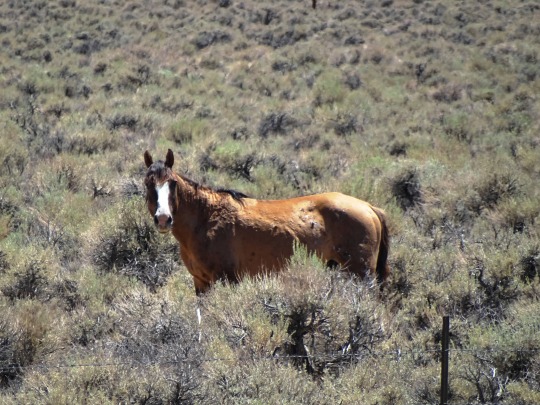


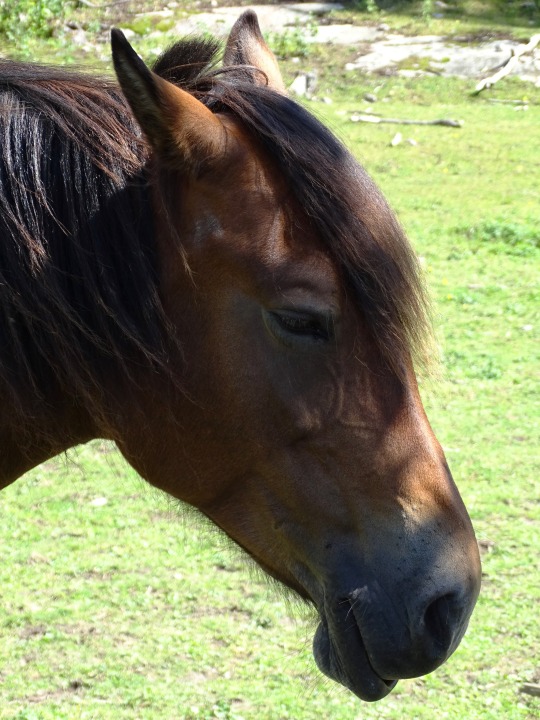
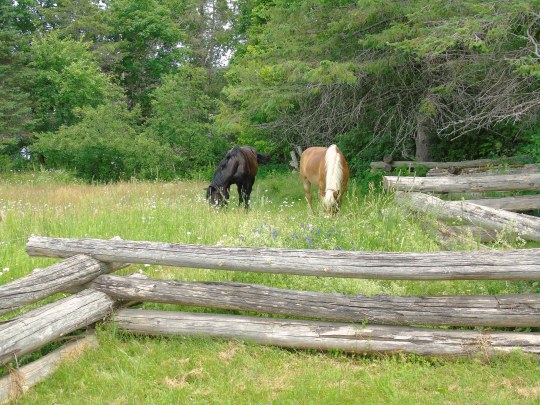


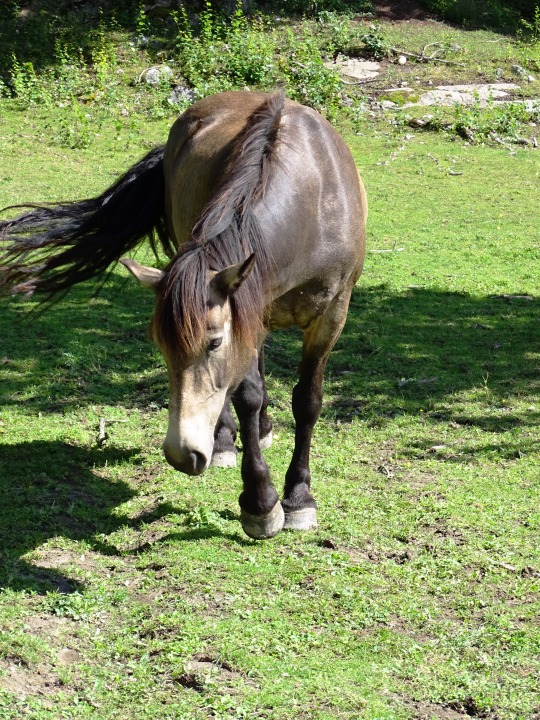



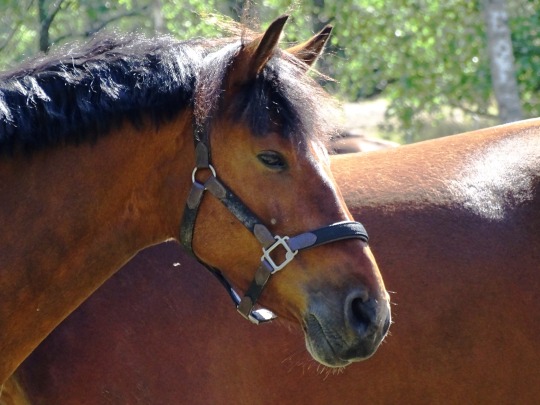




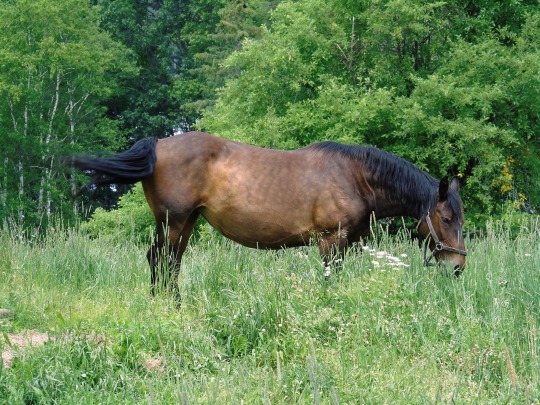
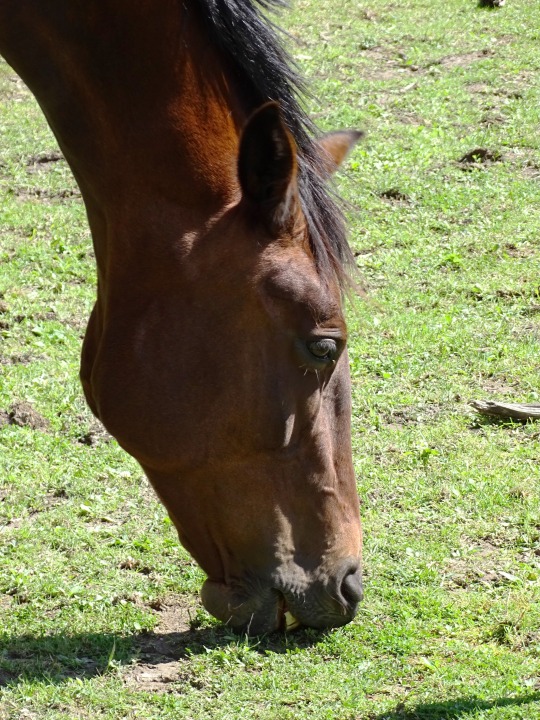
National I Love Horses Day
This National I Love Horses Day on July 15, we are not going to tell you to hold your horses because today is about going all out for horses. Horses are one of the most beloved and adored animals in the world. In fact, horses are in fourth place on the list of the world’s most popular animals. Horses have been very important for humankind for a while now, having been domesticated since ancient times. Due to their versatility, horses are used in a variety of fields, from agriculture and transportation to entertainment. Horse racing and show jumping also see horses showing off in front of cheering crowds.
History of National I Love Horses Day
National I Love Horses Day was created to highlight the importance of the animal in human history and development. Horses have been around for around 50 million years and they were domesticated by nomads in 4000 B.C. The animal is believed to have originated from North America, with increased traveling and globalization taking it to other parts of the world. These early horse breeds later became extinct on the American continent. According to the Integrated Taxonomic Information System, today, there are many other horse breeds but all of them are believed to have descended from Equus caballus, including the populations of feral horses in the wild. Horses have 350-degree vision and are extremely social. They roam around with their own species as well as other animals. Furthermore, their aptitude in socializing makes them easy animals to breed.
In the old days, horses were domesticated and farmed for their meat and milk. The animal was an important source of sustenance in the central Asian steppes, where, to date, horses are bred for consumption. In some cultures, a mare’s milk was also fermented and enjoyed as an alcoholic drink. As human populations increased and commercialization started taking over, horses began being used to cultivate the land and other general agricultural settings. Because of the strength and endurance they displayed, horses were also being used for the transportation of goods and people over long and short distances. Over the years, horse racing and show-jumping contests also gained the attention of the public.
National I Love Horses Day timeline
4000 B.C. Earliest Recorded Instance of Horse Domestication
The earliest records of horse domestication are found, particularly in areas of Ukraine and Kazakhstan.
1992 Przewalski Reintroduced in the Wild
After believing the species to be extinct for over 20 years, the Przewalski's horse breed is reintroduced into the wild through conservation efforts.
1993 American Secretary Appointed for Wild Horses
President Clinton nominates the secretary of the U.S. Department of the Interior, Bruce Babbitt, to oversee the care for wild horses in America.
2005 Legislation for Unadopted Horses
Legislation is passed in order to allow unadopted horses to be taken to slaughterhouses after an allotted period of time.
National I Love Horses Day FAQs
What day is National Horse Day?
National Horse Day is on December 13.
What is a Hippophile?
A hippophile is a person who loves horses.
Can horses love humans?
The love you feel for your horse may not be exactly reciprocated. But a horse can certainly feel — and give — affection.
How To Celebrate National I Love Horses Day
Show some love
Ride a horse
Spend a day with horses
Horses and humans go way back. Show some love to these amazing animals that have been our companions in many fields. They have helped feed us, travel through familiar and unfamiliar terrains, and entertained us endlessly on the racing fields and stage.
If you’ve never ridden a horse before, this is your chance to grab the opportunity. Book yourself a spot on a horse riding tour, and then just sit back and enjoy. Feel the wind in your hair. Riding a horse is an experience you must try at least once.
Find horse farms in your area and go and spend a day with horses. You help feed them, brush them, and take them for a trot or a light canter. Horses are friendly creatures and spending time with them can be very therapeutic.
5 Facts About Domestication That Will Blow Your Mind
One of the earliest domesticated animals
Pigs/cattle for more settled communities
Age-old eggs
Changes in genes for easier domestication
Darwinian documentation for behavior patterns
Starting in around 7000 B.C., dogs were one of the earliest domesticated animals, for reasons related to protection from other humans and animals.
Historians trace the domestication of pigs and cattle back to around the same time goats and sheep were domesticated, but the former are believed to have been domesticated in communities that were already settled.
Microfossil embryos of chickens found in China are believed to be 60 million years old.
Changes to the gene markers of an animal’s endocrine system can help them be less fearful of humans.
Charles Darwin documented different behavioral patterns in domesticated animals compared to their non-domesticated relatives.
Why We Love National I Love Horses Day
It’s a celebration of horses
It’s a celebration of companionship
It’s a celebration of history
While we do not need to introduce you to the incredible qualities of the animal, here are some of their most beloved attributes: Horses, much like dogs, are loyal animals. They also have amazing stamina, strength, and speed that enable them to endure long distances without breaking a sweat.
Horses are social creatures with a great ability to read and remember the people around them. While they have helped humans in a number of areas, they have also made great friends. Horses can understand when you are stressed, angry, or happy, and they can comfort you when needed.
If you want to trace the history of human civilization, researching horses is a good start. This animal has been an active participant in agriculture/farming, travel, transportation, entertainment, and warfare. People have been domesticating and employing horses for generations.
Source
#north Swedish horse#wild horse#Graceland#Tyresta National Park#travel#original photography#vacation#tourist attraction#landmark#landscape#Kings Landing Historical Settlement#New York City#Memphis#New Brunswick#animal#Tennessee#Stockholm County#Nevada#Sweden#National I Love Horses Day#15 July#NationalILoveHorsesDay#USA
3 notes
·
View notes
Photo

#bobhope #kentuckyderbe #quotestoliveby #quoteoftheday #quotes #lexophile #bibliophile #hippophile #logophile #iconophile #retrophile (at Columbia, Tennessee) https://www.instagram.com/p/COYgQUYh99y/?igshid=a2p3z9i7sta7
#bobhope#kentuckyderbe#quotestoliveby#quoteoftheday#quotes#lexophile#bibliophile#hippophile#logophile#iconophile#retrophile
0 notes
Text

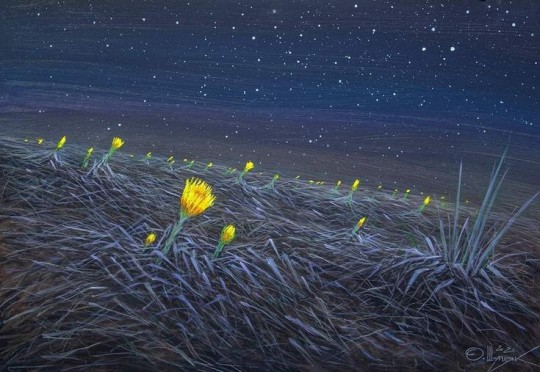
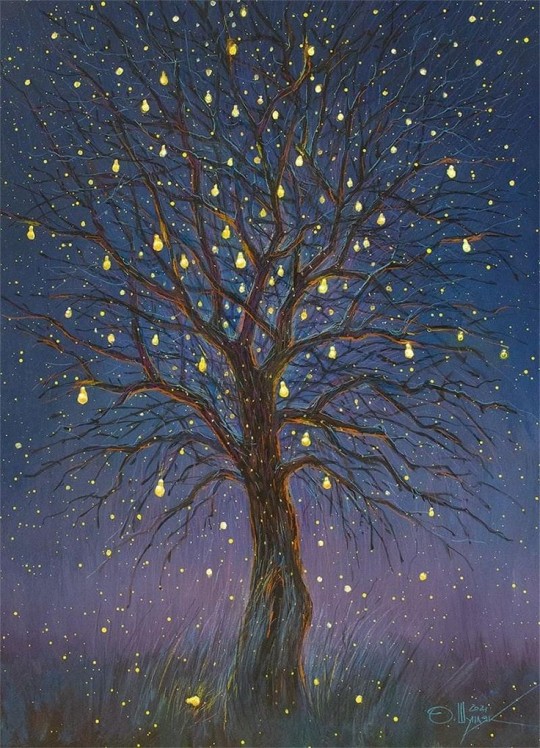



I don't know about you, but I'm kinda bibliophile, hodophile, autophile, thalassophile, retrophile, opacarophile, astrophile, selenophile, pluviophile , hippophile, discophile, dendrophile, clinophile and of course a logophile.
Sadia Hakim
#retro photography#vintage#old art#old soul#artistsupport#vangoghart#vangogh#van gogh#space aesthetic#fields#farmhouse#magicfolk#lovely#pretty#aesthetic#writers on tumblr#books & libraries#positivity#alpharune#sadiahakim#beautiful quote#writer's of pakistan#quotes#art#rainiscoming#rainforest
163 notes
·
View notes
Photo

Hippoglitch
I regularly visit the San Diego Zoo Hippo Cam and sometimes do a screen recording of the noble beasts when they are doing something noteworthy, like eating (they spend quite a lot of time standing still next to each other in their pool). Just FYI, that is the mother on the right and the “baby” boy on the left.
On this day the recording suffered some kind of glitch which I found oddly mesmerizing (I’m easily amused in some respects) and which called to mind the Matrix (remember the black cat?).
If you are a hippophile I recommend checking out the Hippo Cam at the San Diego Zoo to whom I am grateful for making the feed available to all.
2 notes
·
View notes
Text
》》 KINDS OF PHILES🌟
AILUROPHILE - A person who likes cats. A cat lover.
AMYCHOPHILE - A person who loves being scratched.
ASTROPHILE - A person who loves stars, astronomy.
AUTOPHILE - A person who loves solitude, being alone.
BIBLIOPHILE - A person who collects, or has a great love of books.
CERANNOPHILE - A person who loves lightning and thunder.
CHIONOPHILE - A person who finds comfort in a cold weather.
CLINOPHILE - A lover of reclining, lying in bed.
CINEPHILE - A lover of film, motion pictures.
CIOMETROPHILE - A person who lover of cemeteries.
CYNOPHILE - A person who loves canines, a dog lover.
DENDROPHILE - A person who loves forests and trees.
DENOPHILE - A person who enjoys wines, usually as a connoisseur.
DINOPHILE - A person who loves dinosaurs.
DISCOPHILE - A person who loves vinyl, a record collector.
HELIOPHILE - A lover of the sun.
HIPPOPHILE - Someonecwho loves horses.
HODOPHILE - One who loves to travel.
LIMNOPHILE - A person who loves lakes.
LOGOPHILE - A person who is a lover of words.
MELOPHILE - Person who loves music.
NEOPHILE - One who loves anything new or novel.
NEPHOPHILE - A person who loves clouds.
NYCTOPHILE - A person who loves night or darkness.
OPACAROPHILE - A person who loves sunsets.
OROPHILE - One who loves mountains.
PHOTOPHILE - A person who finds comfort in natural light.
PISTORIOPHILE - A lover of baking, baked goods.
PLUVIOPHILE - A lover of rain; someone who finds joy and peace of mind during rainy days.
POGOPHILE - A person who is fond of, or loves beards.
RETROPHILE - A person who loves artifacts and aesthetics from the past.
SELENOPHILE - A person who loves the moon.
STEGOPHIL - A person who loves to climb buildings.
STIGMATOPHILE - A person who is obsessed with tattoos piercings.
THALASSOPHILE - A lover of the sea, someone who loves the sea, ocean.
TUROPHILE - A person who loves cheese.
XANTHOPHILE - A lover of the colour yellow.
XYLOPHILE - Someone who loves woods.
6 notes
·
View notes
Note
Honey there is no way that a girl who does nothing of interest, and barely posts has 16,000+ fans following her in one day and thats even if all of them have 5 accts or so which with her fans do have..i have seen it.
I mean she's not even a horse enthusiasts, she's more of a hippophile since she only has ONE horse. That's it thats her "content", riding said horse and joining with other people to ride their horses in groups or staring at a camera and making weird faces as if she's doing it to children. How does that earn you 30k+ followers in a month?
She also has strange activity happening on tiktok/twitter which some have pointed out. Accts with the same stuff or same pfp (not colby fans but regular people) following her on twitter and her following random accts with weird stuff on tiktok. I know you dont want to assume and make her seem crazy but girl she kinda is. She does so much crazy and shady stuff on the downlow, when you see it, its nuts.
i try to leave some room for disbelief in all of this because i don't want to believe some of things she has done. when i said i wish i could go back to the time when i didn't know this about her, i meant it.
that's not to say i'm gonna forget about the things she has done bc i just can't ignore what is obviously right there. but i try to leave some room open for all of this to be fake because i truly don't want it to be real, if that makes sense.
that being said, i don't believe any of the followers she has gotten in the last five days are real. you can't gain 36K followers when you haven't been active since june.
and the reason i can't fully believe it's her only is bc it would be too obvious. it would also be incredibly stupid of her to buy that many followers in a single time period. i've watched ppl talk about buying followers and they literally say don't buy a lot in one sitting bc it will look fake. you want to gradually gain over time, not grow incredibly fast instantly.
not to mention, she wouldn't have gotten this far if she was stupid. she's smart. you can't be both conniving and stupid bc you won't make it very far.
also as a side note, 30K+ followers in a month isn't impossible to gain. colby has gained about 21K+ followers in the last 30 days according to social blade. and it makes sense bc he is relatively active on there. and not to mention but the day he posted photos, he lost followers.
any of her other social media accounts i don't really know about. instagram is the only place it seems like she has too huge of a following. which is weird since that is where she is least active on.
idk. this is all too fucking weird for me lol
4 notes
·
View notes
Text
@liesreign

“Does this make you a hippophile ?”
2 notes
·
View notes
Photo

🔥POPULAR 🔥 “Thigmotropism is the sense of touch that some plants have that makes them grow in spirals around things.” “Zenography is the study of the planet Jupiter.” “A hippophile is someone who loves horses...” not hippopotamuses, as I had guessed. All remarkable. Unusual. Difficult. And so fun!
Jane Solomon’s The Dictionary of Difficult Words reveals over 400 delightful details of the English language, from abecedarian ("someone who is learning the alphabet") to zygodactyl ("if a bird is zygodactyl, its feet have two talons or toes facing forward and two facing backward"), and so many words in between.
This book is a really wonderful gift that will wow kids (and their parents) with the wonders of language. Bold and stylish illustrations by Louise Lockhart bring depth to each definition. A new favorite.
Buy this book
52 notes
·
View notes
Photo

#Hippophile (at Maradana) https://www.instagram.com/dilanjan.r/p/BqfA-k7B4mo/?utm_source=ig_tumblr_share&igshid=1ug8a5fe9vlgp
0 notes
Photo
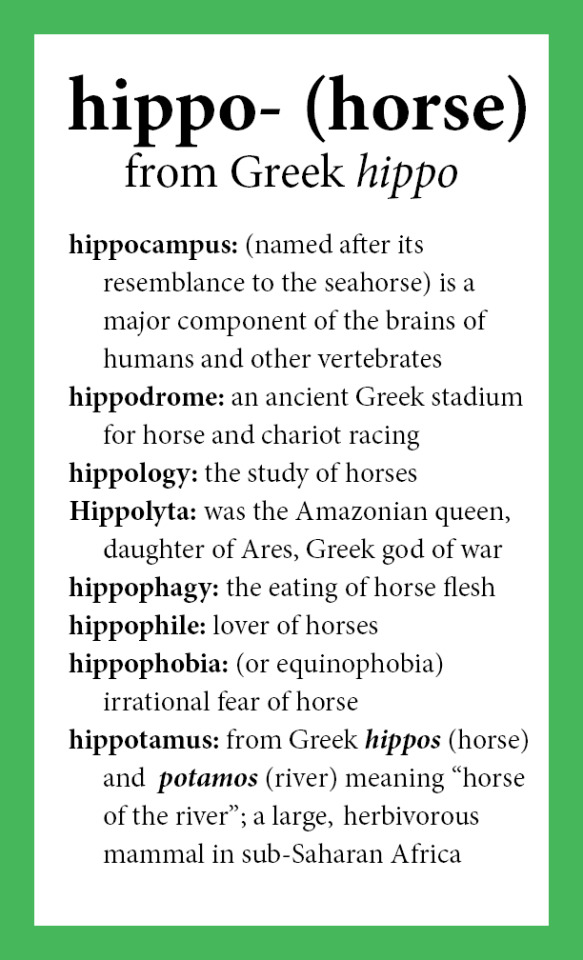
#etymology#Greek roots#hippo#horse#hippocampus#hippodrome#hippophobia#hippophile#hippophagy#Hippolyta#hippology#hippopotamus
0 notes
Photo
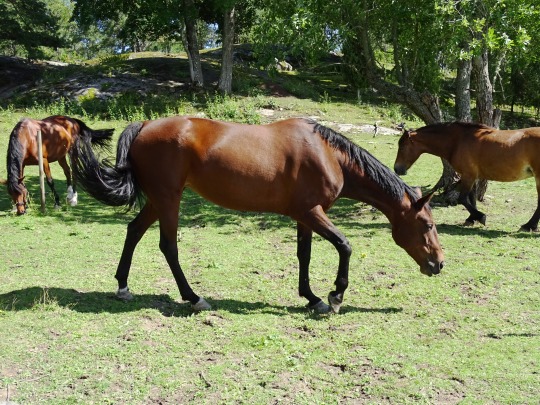






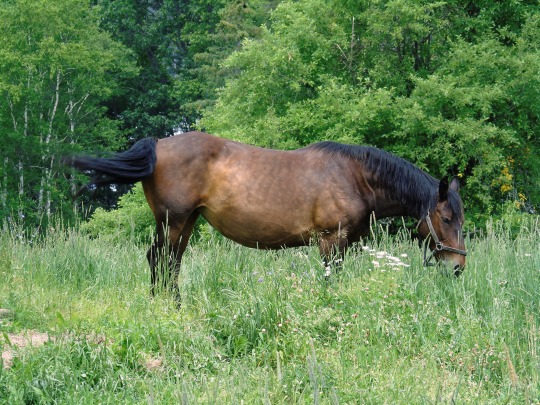


National I Love Horses Day
This National I Love Horses Day on July 15, we are not going to tell you to hold your horses because today is about going all out for horses. Horses are one of the most beloved and adored animals in the world. In fact, horses are in fourth place on the list of the world’s most popular animals. Horses have been very important for humankind for a while now, having been domesticated since ancient times. Due to their versatility, horses are used in a variety of fields, from agriculture and transportation to entertainment. Horse racing and show jumping also see horses showing off in front of cheering crowds.
History of National I Love Horses Day
National I Love Horses Day was created to highlight the importance of the animal in human history and development. Horses have been around for around 50 million years and they were domesticated by nomads in 4000 B.C. The animal is believed to have originated from North America, with increased traveling and globalization taking it to other parts of the world. These early horse breeds later became extinct on the American continent. According to the Integrated Taxonomic Information System, today, there are many other horse breeds but all of them are believed to have descended from Equus caballus, including the populations of feral horses in the wild. Horses have 350-degree vision and are extremely social. They roam around with their own species as well as other animals. Furthermore, their aptitude in socializing makes them easy animals to breed.
In the old days, horses were domesticated and farmed for their meat and milk. The animal was an important source of sustenance in the central Asian steppes, where, to date, horses are bred for consumption. In some cultures, a mare’s milk was also fermented and enjoyed as an alcoholic drink. As human populations increased and commercialization started taking over, horses began being used to cultivate the land and other general agricultural settings. Because of the strength and endurance they displayed, horses were also being used for the transportation of goods and people over long and short distances. Over the years, horse racing and show-jumping contests also gained the attention of the public.
National I Love Horses Day timeline
4000 B.C.Earliest Recorded Instance of Horse Domestication
The earliest records of horse domestication are found, particularly in areas of Ukraine and Kazakhstan.
1992Przewalski Reintroduced in the Wild
After believing the species to be extinct for over 20 years, the Przewalski's horse breed is reintroduced into the wild through conservation efforts.
1993American Secretary Appointed for Wild Horses
President Clinton nominates the secretary of the U.S. Department of the Interior, Bruce Babbitt, to oversee the care for wild horses in America.
2005Legislation for Unadopted Horses
Legislation is passed in order to allow unadopted horses to be taken to slaughterhouses after an allotted period of time.
National I Love Horses Day FAQs
What day is National Horse Day?
National Horse Day is on December 13.
What is a Hippophile?
A hippophile is a person who loves horses.
Can horses love humans?
The love you feel for your horse may not be exactly reciprocated. But a horse can certainly feel — and give — affection.
How To Celebrate National I Love Horses Day
Show some love
Ride a horse
Spend a day with horses
Horses and humans go way back. Show some love to these amazing animals that have been our companions in many fields. They have helped feed us, travel through familiar and unfamiliar terrains, and entertained us endlessly on the racing fields and stage.
If you’ve never ridden a horse before, this is your chance to grab the opportunity. Book yourself a spot on a horse riding tour, and then just sit back and enjoy. Feel the wind in your hair. Riding a horse is an experience you must try at least once.
Find horse farms in your area and go and spend a day with horses. You help feed them, brush them, and take them for a trot or a light canter. Horses are friendly creatures and spending time with them can be very therapeutic.
5 Facts About Domestication That Will Blow Your Mind
One of the earliest domesticated animals
Pigs/cattle for more settled communities
Age-old eggs
Changes in genes for easier domestication
Darwinian documentation for behavior patterns
Starting in around 7000 B.C., dogs were one of the earliest domesticated animals, for reasons related to protection from other humans and animals.
Historians trace the domestication of pigs and cattle back to around the same time goats and sheep were domesticated, but the former are believed to have been domesticated in communities that were already settled.
Microfossil embryos of chickens found in China are believed to be 60 million years old.
Changes to the gene markers of an animal’s endocrine system can help them be less fearful of humans.
Charles Darwin documented different behavioral patterns in domesticated animals compared to their non-domesticated relatives.
Why We Love National I Love Horses Day
It’s a celebration of horses
It’s a celebration of companionship
It’s a celebration of history
While we do not need to introduce you to the incredible qualities of the animal, here are some of their most beloved attributes: Horses, much like dogs, are loyal animals. They also have amazing stamina, strength, and speed that enable them to endure long distances without breaking a sweat.
Horses are social creatures with a great ability to read and remember the people around them. While they have helped humans in a number of areas, they have also made great friends. Horses can understand when you are stressed, angry, or happy, and they can comfort you when needed.
If you want to trace the history of human civilization, researching horses is a good start. This animal has been an active participant in agriculture/farming, travel, transportation, entertainment, and warfare. People have been domesticating and employing horses for generations.
Source
#north Swedish horse#Tyresta National Park#Graceland#Memphis#travel#animal#flora#fauna#pasture#Kings Landing Historical Settlement#USA#Tennessee#New Brunswick#National I Love Horses Day#15 July#NationalILoveHorsesDay#vacation#tourist attraction#landmark#original photography#fence#meadow
5 notes
·
View notes
Photo
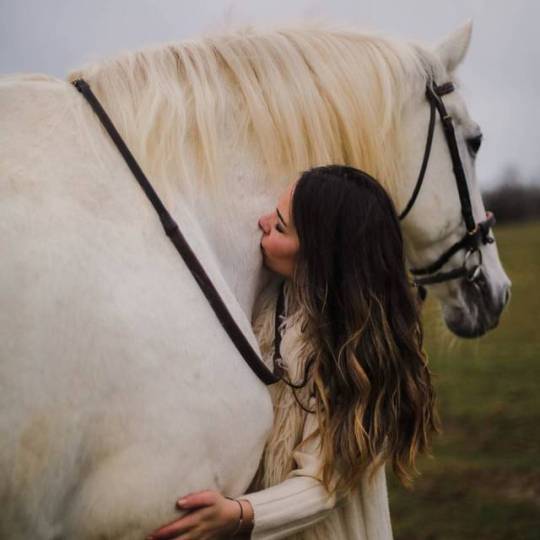
#no_caption_needed #horse_lover #hippophile
0 notes
Text
The secret to sculptor Anna-Wili Highfield's success: break the mould
It was by the time fledgling designer (and seasoned hippophile) Bianca Spender saw it. She and Highfield had met when Spender bought a tiny painting from Highfield's graduating show at Sydney's National Art School, her first and only sale to that point. When Highfield told Spender she had moved on from painting and was making a horse from pipes, the designer just back from overseas and working for her mother, Carla Zampatti was incredulous.
"I asked her how she'd done it and she said, 'I just bent them'," Spender says. "I asked how it was held together and she said, 'Copper wire and masking tape; I'm going to hang it from the ceiling'. I thought, 'You have to be kidding'." Then Spender saw it. "It was like one of those drawings where you can't lift your pen from the paper, turned magically into three dimensions. It was utterly transformative. I thought, 'I have to have that horse.'
"There were about 20 seconds between seeing it and being able to get Anna-Wili's attention to ask, firstly, if it was for sale and, secondly, if anyone had bought it, and they were the longest 20 seconds of my life."
Re-hung from the ceiling of Spender's Bronte home, the horse featured in a Sydney Morning Herald article on Spender, who subsequently commissioned Highfield to make other works, including a paper owl for the launch of her first store on Oxford Street in Sydney's east. Suspended mid-flight, pursuing a fleeing Spender dress, that owl nailed the eye, particularly at night, spot-lit and spooky. Images were shared. People came in to ask about the artist. What had been a trickle of commissions and interview requests turned into a tide. Highfield never made it back to Opera Australia to finish her apprenticeship. She swapped the owl for a Spender wedding dress when she and Cavanough married in 2009.
Her life changed gear. Particularly after an interview request from a show called Man Shops Globe on the Sundance Channel in the US which visited her in her studio on the recommendation of then New York-based Australian stylist Sibella Court and a commission from luxury goods company Herms, specifically its Australian communications director Eric Matthews, a former editor of Belle magazine with an interest in art.
Time was becoming a real issue. Highfield hired an artist's studio in a converted terrace, escaping there at every opportunity. Increasingly, she was barely getting through her emails. "I was making sculptures, not marketing myself, but I could just feel something happening and it was getting bigger and bigger," she says. "It was fabulous and it saved me, but I just couldn't keep up."
By 2011, she had a waiting list of 200 people and up to three years, which is when she recruited her cousin Xanthe as her first assistant. "I remember I was holding Matilda and Xanthe was at my desk and she looked up and said: 'Wili, The New York Times wants to know why you're not answering their emails,' " she says. "I remember thinking, 'F, I've gone viral'. I was getting commissions from all around the world, interview requests from German and American art magazines and Russian Vogue. You could literally track it on a map.
"The interest in me as a personality was hilarious. I was being asked my favourite Sydney restaurant. I remember thinking, 'This is so beyond my life', which is about going to the studio and the park."
Glamour was to follow, though, and when it did, it found Highfield ready. The portrait that accompanied the subsequent New York Times article showed her young and beautiful "They photo-shopped me to a ghoulish extent," she grimaces with the just-finished, three-quarter-scale Herms horse behind her, busting through a wall.
As she herself was about to. When Pegasus flew into Herms' Brisbane store, a local bus driver started pulling over between stops to give passengers a look. When it flew on to Melbourne, businesswoman and art collector Carol Schwartz not only spotted it in the Herms window, but travelled to Sydney to meet the artist. "It had this extraordinary strength and delicacy," remembers Schwartz. "I was so fascinated by it that I wanted to meet her. Her studio was in an old house back then and it was just so incongruous: this amazingly beautiful woman and this amazingly beautiful work in this funny little room."
A subsequent commission, an unkindness of ravens for Herms' Sydney windows, caught the eye of prominent Australian artist Ken Unsworth, who contacted Highfield to buy a work. Her waiting list would peak at five years, before shrinking back to months as she started concentrating on fewer, bigger commissions, her prices increasing from the few thousand dollars she originally charged to upwards of $20,000 today for major works.
I was getting commissions from all around the world ... You could track it on a map. The interest in me as a personality was hilarious.
Anna-Wili Highfield
"Her story is so inspiring in terms of just starting to do something and everyone being magnetically attracted to it," says Spender.
That magnetism partly reflects her subject matter nature at the time it is most in peril along with the novelty of her medium, cotton rag paper, and her ability to conjure a creature through a bravura display of technical skill. It's also about what she then takes away: up to 70 per cent of the work, to "allow a doorway for the imagination". What Highfield's works communicate is not a likeness so much as a living moment; of apprehension, as a thing coheres from its parts, as artist and audience collude to create it. As she puts it: "I'm creating a vessel for a particular energy."
Along the way, Highfield has crafted a very individual way of being an artist in Australia: working entirely on her own account, independent of traditional enablers such as public and private galleries, instead powered by word of mouth and social media. It says it all that her first commercial show in Australia will be at the Tim Olsen Gallery in Sydney in October, more than a decade into a successful career, and 18 months after Olsen showed her in New York. "I would have approached her sooner had I known," says Olsen, who sees echoes of everyone from the great American sculptor Alexander Calder to surrealists such as Salvador Dali and Man Ray in Highfield's work.
Instead, her staple has been commissions from individuals who have found their way to her. It's a fresh angle on the new world's oldest story: a system of established gatekeepers recording or publishing companies, the public and private gallery system is circumvented by new technology (such as made-for-art Instagram, which emerged around the same time as Highfield), erasing old barriers to entry in the process.
In Highfield's case, those new players have been luxury goods companies and their ever-increasing appetite for artist collaborations. Herms has played the kind of patronage-and-promotional role for her that public galleries have in more traditional careers. Highfield has made a major work for the house every year since Pegasus, 10 in total, including a series of horses for its Istanbul store last year and another in Herms leather, animated mechanically by Highfield's husband Simon (the two separated in 2014, but remain close, working in adjoining studios and sharing the children). She is now working on an 11th piece destined for Europe.
There's nothing new about such collaborations, from Dali and couturier Elsa Schiaparelli in the 1930s to Louis Vuitton and Jeff Koons, Yayoi Kusama and Richard Prince since. The heydays of luxury goods and contemporary art have coincided often merged over the past two decades. Think Damien Hirst's $US100 million 2007 diamond skull, the memento mori of the pre-GFC boom. In the decade since, collaborations have exploded. Pure and applied creativity have grown ever-more symbiotic.
When jeweller Tiffany & Co. opened its new flagship store in Sydney's King Street last month, including its first permanent high jewellery offering in Australia, it included a pair of new Highfield works. In two private suites on the upstairs bridal mezzanine, sprays of delicate fairy wrens explode from sconces of silvery bottle brush, circling the heads of ring-shopping couples.
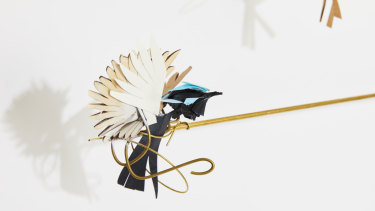
Highfield wrens, part of a commissioned work for the private suites of the bridal mezzanine in Tiffanys new Sydney store.Credit:Robin Hearfield
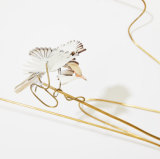
Highfield wrens, part of a commissioned work for the private suites of the bridal mezzanine in Tiffanys new Sydney store.Credit:Robin Hearfield
The choice of wrens typifies the cleverness of Highfield's work, expressing not only the artist but a client and relationship. Beyond being fabulously decorative, the birds are native part of the idea of commissioning local artists for the store was to give it a sense of place the males' brilliant hoods a near-as-damn approximation of Tiffany blue. "They just remind you of that wonderful line from the film: 'Nothing bad could ever happen at Tiffany's'," the jeweller's vice-president of visual merchandising, Richard Moore, said during a lightning visit to Sydney for the opening.
Success usually comes at a price, and whether Highfield will be embraced by the mainstream contemporary art world or dismissed as a lifestyle, commercial or craft artist as so many female artists have been remains to be seen. Her New York show was only a moderate success, says Tim Olsen, though works have continued to sell since.
"The transition from fashion and design to pure art is a lot easier these days," he adds, citing his recent Dinosaur Designs show, featuring work by his sister, Louise Olsen, and her partner, Stephen Ormandy, which sold out. "Anna's work totally transcends craft, design or fashion. Sometimes I don't know how she holds them together. And I think she realises she has to move beyond commissions to be taken seriously as an artist."
According to Agatha Gothe-Snape a successful "serious" artist whose work is held by public galleries Highfield is already past that. "It's just such a relief that pure talent and work speak louder than any institutional approval," Gothe-Snape says. "I don't know any artists who have been able to raise two kids and live the life she does in Sydney from their art. It's just unheard of."
Gothe-Snape recalls the time Highfield made a profile of her son out of pipe cleaners. "It isn't just that the likeness is profound; it is actually him. My boyfriend [artist Mitch Cairns, who won the Archibald Prize in 2017 with a portrait of Gothe-Snape] took one look at it and said, 'That's literally the best thing I have ever seen'. It's magic and she's always had it."
Says Highfield of her works: "They have to feel alive really alive. It's like painting a portrait. One tiny, little mark and all of a sudden it looks like that person. It didn't a moment before and it may not a moment later. I'll just do something and all of a sudden it's alive and singing." If it isn't, she kills it. The day of the shoot for this article, she sends a text asking if an owl she has been working on is in any of the shots. "I just destroyed it," she says when asked why. "You can't let things out that aren't good."
Highfield grew up in Palm Beach the real Summer Bay on Sydney's northern beaches, "right on the edge of a nature reserve", she says. "We'd climb up through the ferns from our back yard and play in the caves overlooking Pittwater."
It was the 1980s and early '90s. The rich blew into town mainly on weekends and holidays, but the parents of her classmates at Barrenjoey High tended to be "builders, photographers, film-makers and artists makers". Like her own. Her mother, Katie Swift, was a caterer-turned-food stylist, as her own mother the early food personality and presenter Rosemary Penman, whom Highfield is said to most resemble had been. Her father, Allan Highfield, was a puppeteer with the legendary troupe the Tintookies and live-action puppet show Blinky Bill on ABC TV.
"That animism of hers has something to do with the fact that her dad was a puppeteer," says Gothe-Snape. "It's in her hands as they touch things. It's how she connects with the world. She's such an elegant, glamorous person, but you look at her hands and they're real: a worker's."
"Maybe," Highfield says, turning the idea over in her mind. "I pull the strings [as she stitches a work together] and something becomes alive. I was certainly very proud at school that my Dad was Charlie Goanna, Walter Wombat and Sybilla the Snake. He was deeply interested in Aboriginal culture. He'd go away for months at a time touring puppet shows around Australia and he'd often stay in Aboriginal communities."
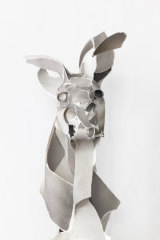
Highfields Kangaroo, 2015.Credit:Jen Leahy
That's how Highfield got her name. "When I was born, Dad was somewhere near Bega doing a show," Highfield says. "Apparently there were pelicans circling the phone box when he rang and found out I'd just been born, earlier than expected. So he found out the local Aboriginal name for pelican and came home saying he wanted to call me Wili. Mum wanted to call me Anna and they argued about it until my grandmother said, 'Just put a hyphen in the middle'."
That pretty well summed up the relationship. Her father drank and had a "temper that made things frightening", Highfield says. When she was 11, she and her elder sister found out that the son of a family friend was actually their half-brother. Her parents divorced when she was 12. "There were so many fracture points, but I just remember this camping trip when we met Dad in Darwin, where he was on tour, and drove back to Sydney over six weeks. They just argued the whole way.
"Dad was nature man, with a beard down to here. He called mum a yuppy we weren't allowed to have tents because tents were for yuppies and he always wanted us to only eat roadkill. I'd lock myself in the car at night and cry. I just remember watching mum washing her face in the billabong with Clarin's cleanser and thinking, 'They are so different'."
Her name enshrines the dichotomy. In conversation for this article, family and friends tend to call her Wili, while the luxury and gallery set prefer Anna. For all her swan-like qualities, Highfield also has an endearingly daggy awkwardness. An honesty and lack of pretence what Tim Olsen refers to as her "uncertain certainty".
"Growing up, I was the fat kid with Coke-bottle bifocals," she says. "I was dyslexic, but it was never diagnosed. The only thing I could do well was draw, so I drew all the time and that got me through 12 years of school. I wouldn't have had a shred of confidence without it."
Loading
It's tempting to see that dyslexia as an essential part of how she's navigated the world: at an angle, by feel, instinct. As a teenager, she didn't fit in. "Palm Beach looked idyllic but it was a monoculture and I wasn't interested in surfing. I didn't date anyone. I would stay in my room and paint. I was a romantic snob, reading Keats and Shelley."
The other thing that having an artist for a father did do, Highfield says, was "make me a better business person". Her mother kept the family afloat, not only by working but also mortgaging and re-mortgaging the family home until she eventually lost it when Highfield was in her 20s. "Mum got us out the door and we wanted for nothing," Highfield says. "But when I finished school she said, 'Can't you do graphic design? There's more chance of a steady job', because she knew how hard it was. When I said, 'I'm not good at graphic design and I'm not interested in it', she said, 'Just promise me you'll try and make money where you can. Your father was always talking about the purity of his art.'"
I think Anna realises she has to move beyond commissions to be taken seriously as an artist.
Tim Olsen
Highfield knew she had to find a way to make it work. "A lot of my anxiety early on, when I was having Matilda, was about how I was going to do that work and have children and make art which is why what happened was so wonderful. I started not asking a lot for my work, which I now think was actually quite clever. It was about honing my art, getting work out there."
Successful second-generation creatives occur regularly in this story, from Highfield to Spender, Olsen and Gothe-Snape, the daughter of the artist Michael Snape. They're a generational creative cohort who grew up together. But they all seem to have learnt a thing or two about the business in the process. In Highfield's case, it helped that she enjoyed working on commission, which a lot of artists hate.
"To me, art's an exchange. I like having somebody in mind and doing what they want. There's a reciprocity and structure and warmth. Artists making work for the museum is a 20th-century thing. And it meant I could work outside an art world I was afraid would reject me. It bought me time to figure out what my work was about by making it; I didn't have to go in with a pitch. And it was good for my confidence. People wanted me to do what I did for them. And they kept coming back."
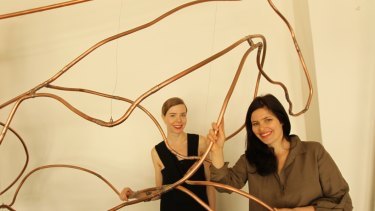
Bianca Spender (at left) and Highfield with her horse sculpture in Spenders Paddington boutique.Credit:Tamara Dean
Ten years after they first met, Carol Schwartz now has 14 Highfield works, including a flock of birds, a parliament of owls and a mob of kangaroos. The latter stand in the kitchen of her beach house on Victoria's Great Ocean Road.
"There are hundreds of kangaroos on the property and it looks like three of them just wandered in," she says. "The expression she has given them is remarkable. They're so alive, they just blow people away. The fascinating thing about her work is that it's only paper and it's partial, so your imagination takes over and fills in the blanks." Spender has so many works including three horses at home, four in stores and boutiques, and one in her studio that her partner has declared a fatwa. "I'm not allowed any more," she says. These days, that first Highfield painting sits on her bedside table.
Highfield's latest project is her largest yet, a house she and her mother bought in Sydney's inner west and are converting into a compound where all four generations will live. "Mum and my grandmother are having the main house and the kids and I are building a smaller house out the back, separated by a garden," Highfield says. "I like small spaces. They force you to be efficient. I only want to have my treasures. Nothing else."
Twenty years after she left home, she has come full circle, particularly given the builder and renovator of the two houses will be her half-brother, Max Arent, another family "maker". "We're all very close these days," Highfield says. "And Dad is a beautiful grandfather. I guess everything works out in the end if you're open to change and tack with the wind. It's like art: it comes together in the making."
To read more from Good Weekend magazine, visit our page at The Sydney Morning Herald, The Age and Brisbane Times.
Most Viewed in Entertainment
Loading
https://www.smh.com.au/entertainment/art-and-design/the-secret-to-sculptor-anna-wili-highfield-s-success-break-the-mould-20190430-p51iiy.html?ref=rss&utm_medium=rss&utm_source=rss_feed
0 notes
Text
Current mood:
Using a baby names website to add selections to my list of names for my future horse(s).
0 notes